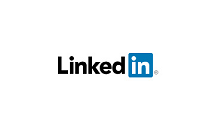Employee Learning, Redefined: Here’s What’s Next for Learning Tech
POSTED on May 4, 2016

9 March, 2016 Rafael Solis
2015 saw learning tech brought into the spotlight, particularly with the acquisition of Lynda.com by LinkedIn for $1.5 billion. While there may be a debate over whether investor sentiment cooled in 2015 or continued to sizzle, 2015 ended with a flurry of learning investments, from HotChalk’s $230M to Udacity’s $105M, and Coursera’s $11M – while continuing into 2016 with Degreed’s $21M fundraise. With an estimated market size of $5.5 trillion, according to Reuters, the learning space will continue to attract a lot of overdue attention.
That being said, technology, consumer behaviors and applications will continue to influence and shape the learning space and shake the foundation of the legacy learning systems (LMS) and processes that were developed by companies like Saba and Cornerstone on Demand. In addition, we are seeing a shift in the SMB sector’s embrace of learning to drive differentiation and a competitive edge in an increasingly competitive global landscape.
Additionally, the conversation about the leadership skills gap and diversity and inclusion heated up considerably in 2015. Enterprise and SMBs are embracing employee learning initiatives to address these issues.
Beyond better content delivery, how do we establish a learning continuum that is ingrained within company cultures? How can a culture of learning make it easier to scale?
Learning will become lean, quick and agile:
1. Learning Will Make Its Home Inside Your Workflow
Learning technology will evolve to letting us consume learning content within our daily workflow and focusing on continuity. Contextual learning, based on keywords and social queues, will replace the traditional model of broadcast learning, which was sporadic and one-directional (think instructor-led training and conferences.).
To keep us in our workflow, learning technology will increasingly be peer-generated, collaborative and sustainable, and new platforms are emerging to meet this need, finally putting the nail in the coffin of the antiquated learning management system (LMS) as we knew it.
2. AI, Machine Learning: Putting Semantic Systems In Place
The last five years have seen a lot of buzz for edtech, but most of that has been around MOOCs or K-12 schools and universities, or in Silicon Valley around “technical” skills development, rather than meeting and providing a vision for the educational needs of the business community. As we all know, learning is indeed a lifelong process, one that is often merely beginning for many of us as we enter the workforce after school.
For edtech to make a stronger impact on the corporate world, a focus on semantic learning delivery will be arriving on the scene soon. Rather than everyone taking the same course, or listening to the same seminar, new learning technologies will adjust to the individual’s preferred learning style, and deliver content in a way that optimizes their comprehension of the learning content. AI and machine learning (think AltSchool) technologies will be stepping in to capitalize on this coming opportunity.
Every department today needs to justify their actions through data and analytics. Using semantic content delivery to put a tailored process in place for employee learning will bake learning into the very fabric of an organization.
3. Learning Literally In The Palm Of Your Hand
Small screens will align nicely with our innate desire for short-form content. On mobile devices, without desktop distractions, we will disconnect from the bloat, bells and whistles of obsolete and cumbersome learning management software, and reconnect with the education itself.
Learning is a day-to-day process. It takes years of consistency to complete a college education. Therefore, mobile devices will allow learning to not only stay within our workflow but become a repeating part of our daily routine.
Beyond what they want to learn (and teach others!) about, the user experience challenge of employee learning is all about catering to how employees want to learn. Providing your workforce with either a dedicated mobile app for the learning program, or a responsively-designed mobile website, is a big step in the right direction.
Most Importantly, Learning About Ourselves
While the demand for hard skills – such as coding – has dominated recently, the conversation around the scramble for soft skills isn’t going anywhere anytime soon. Those who are naturally born with advanced soft skills, such as working well with those who are different from us (a key tenant of diversity and inclusion), have historically risen up the ranks.
While we’ve always been aware of this workplace phenomenon subconsciously, moving forward, businesses will increasingly articulate that adjusting to all stakeholders that we come into contact with in a given week is a skill that all employees should be formally educated on.
A new breed of employee learning technology is emerging to pick up where past players have left off.
Tags: Braidio, Collaborative Learning, employee learning, human resource, learning management system, learning technology, rafael solis